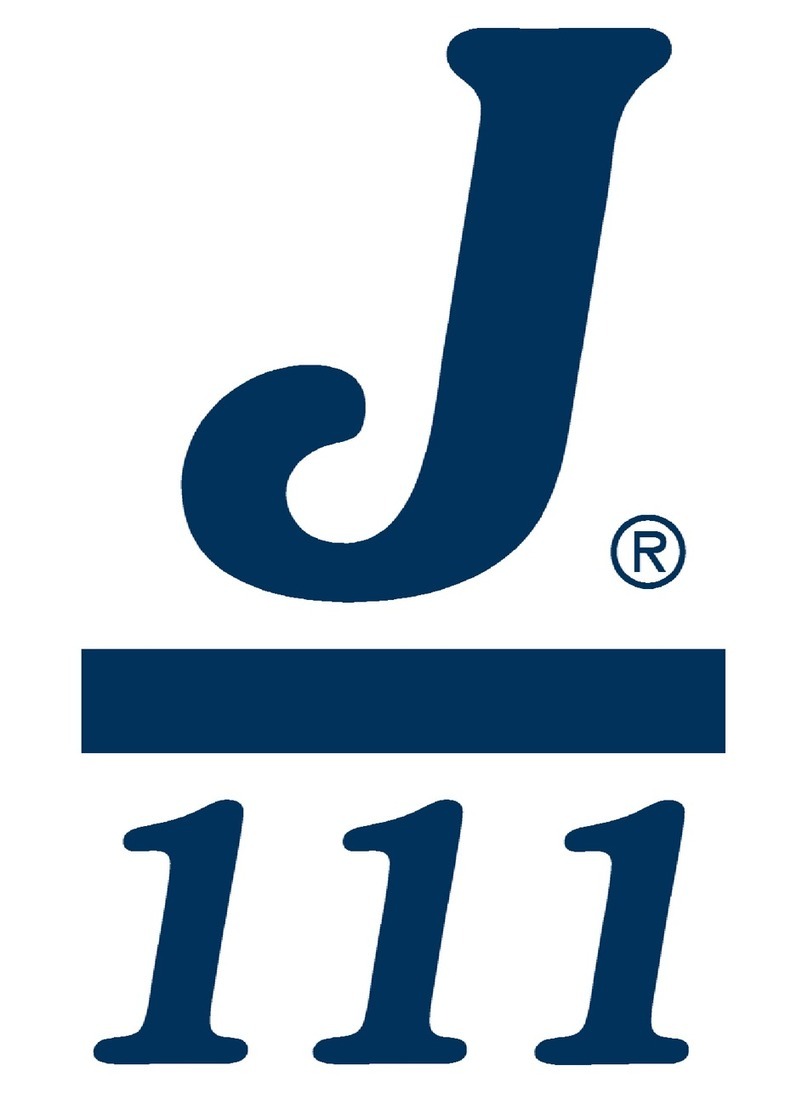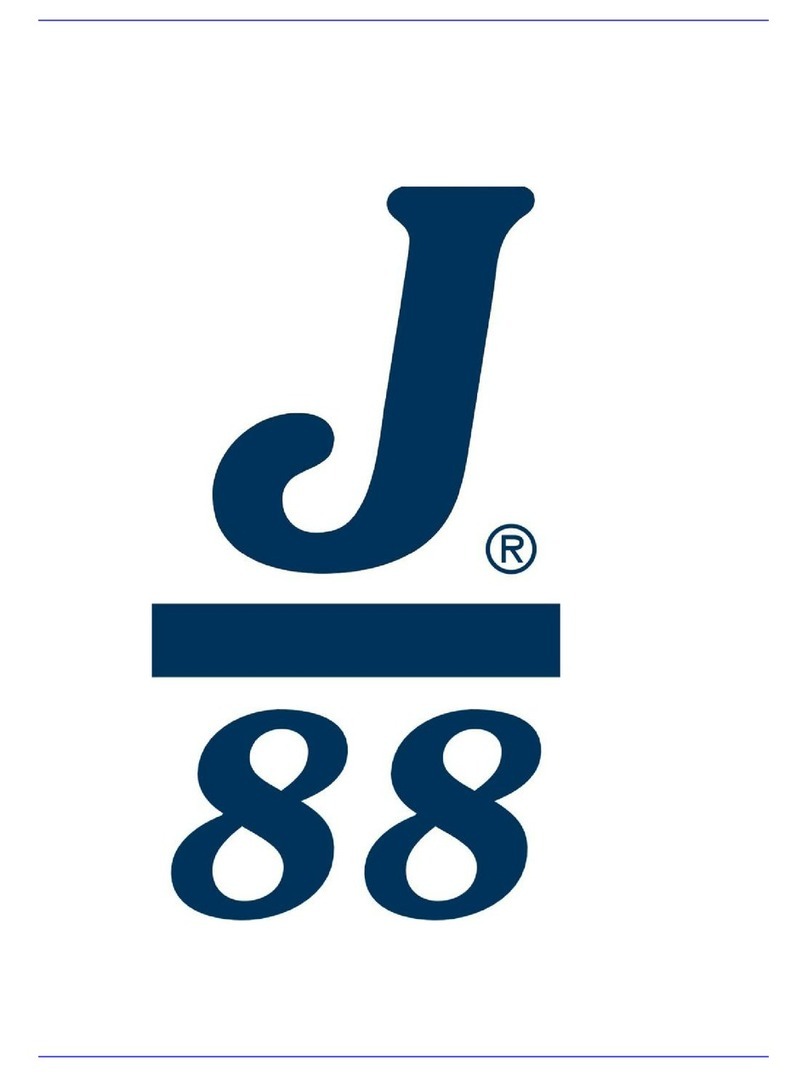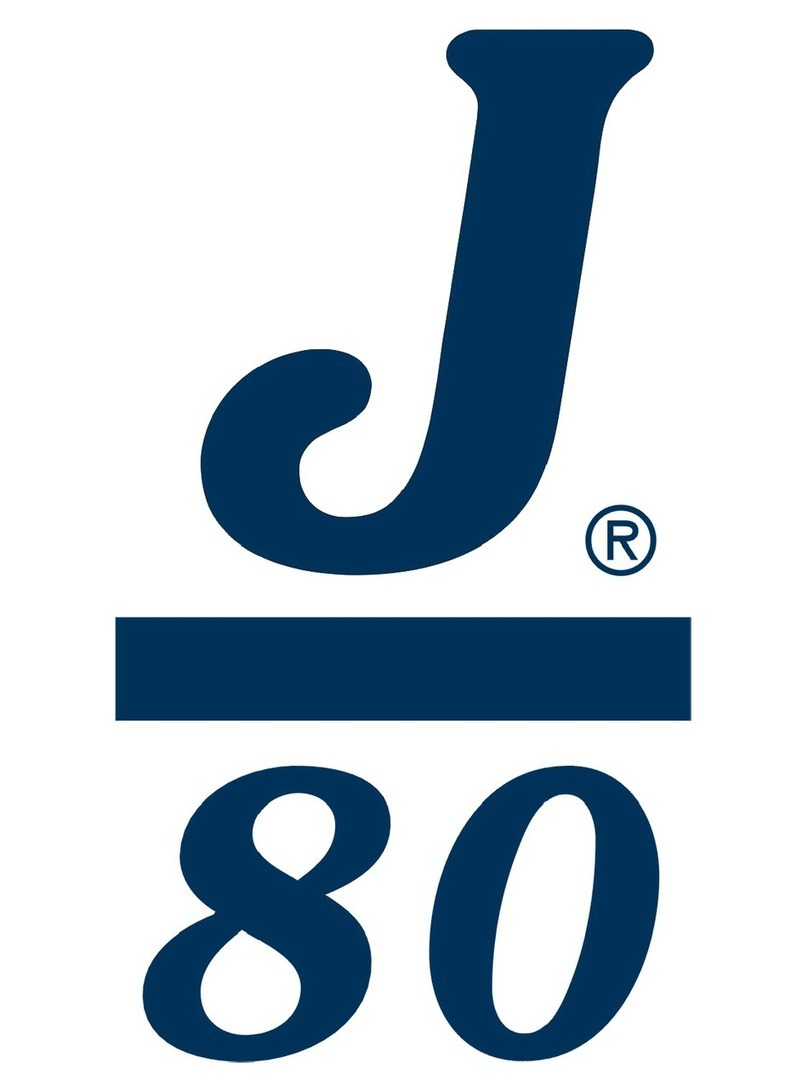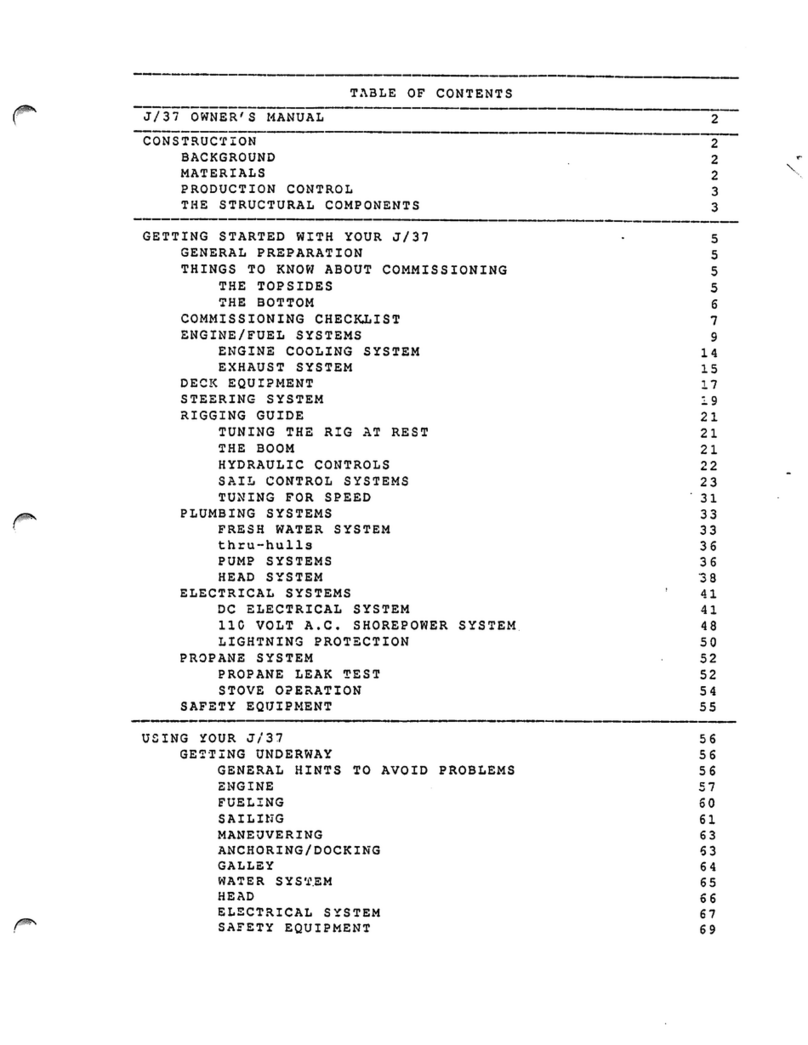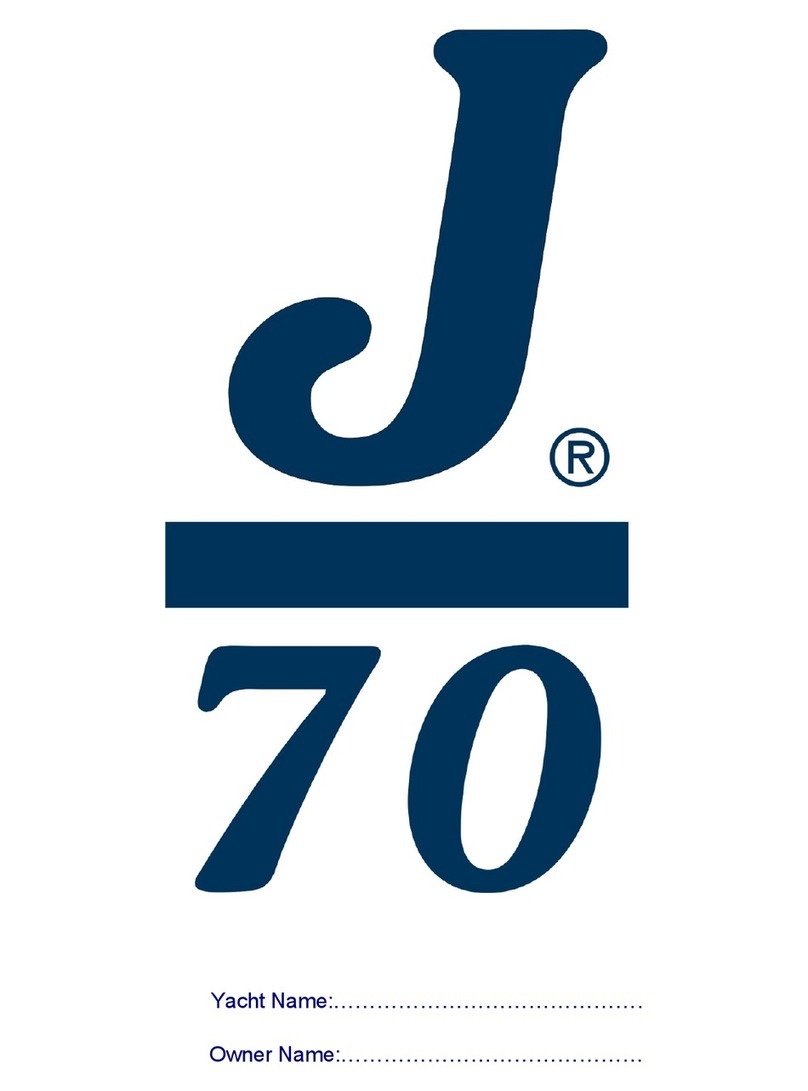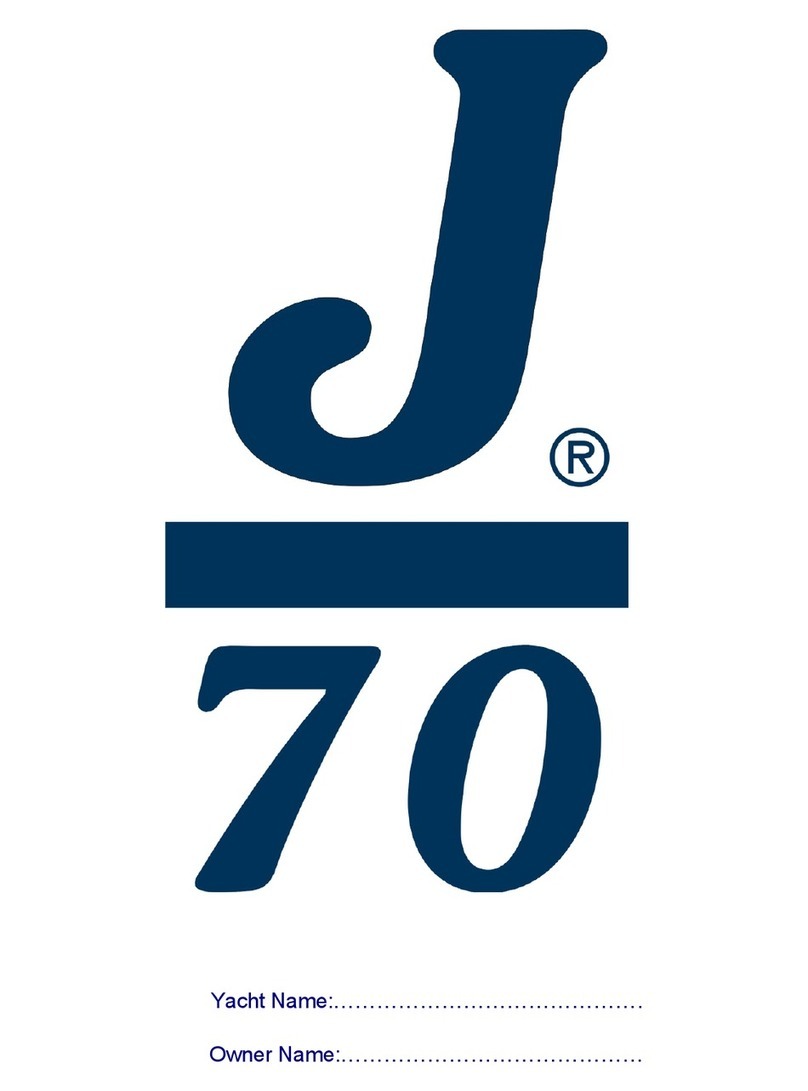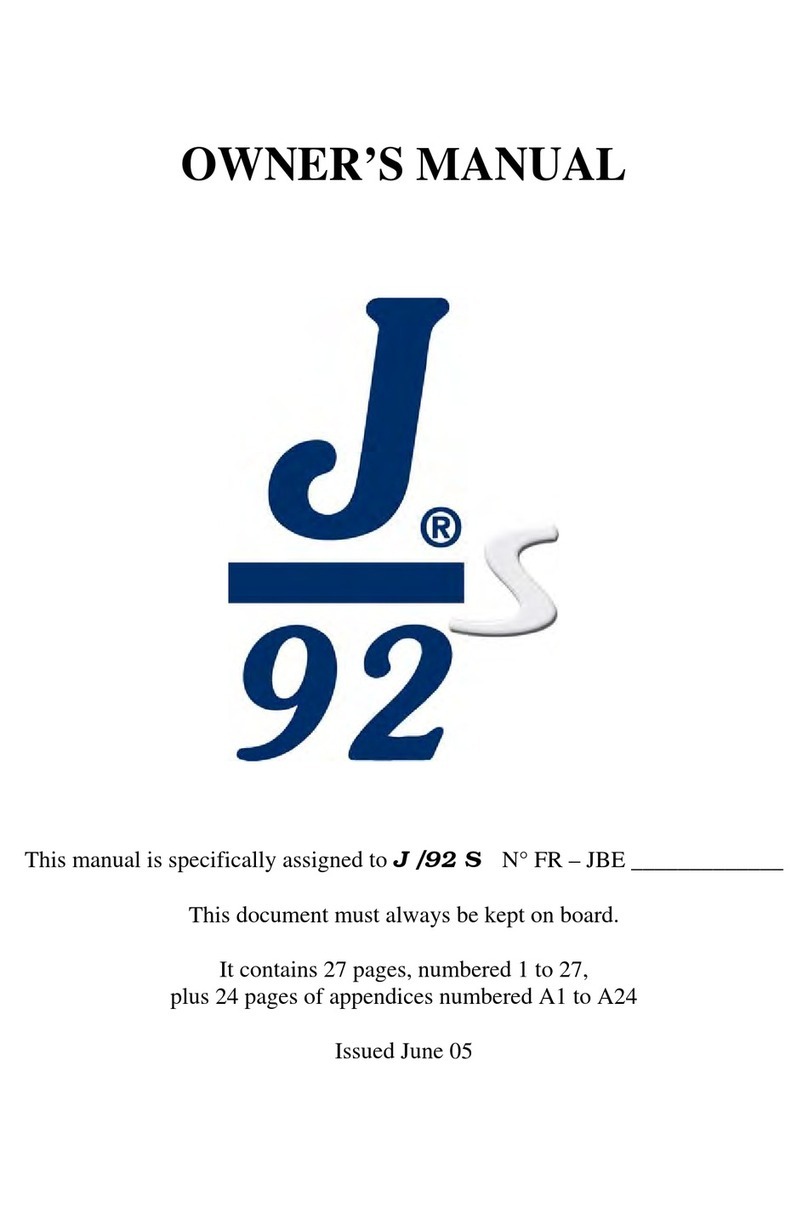
J/145 OWNER GUIDE
Introduction 2
Specifications....................................................................................................................................................................5
Important Contacts...........................................................................................................................................................6
Commissioning Checklist...............................................................................................................................................7
Getting Started With Your J/145.....................................................................................................................................8
Before Proceeding..........................................................................................................................................................8
J/145 Steering System....................................................................................................................................................9
Sail Control Systems.......................................................................................................................................................9
Diagrams, Layouts, & Schematics...............................................................................................................................12
Mainsheet & Traveler Diagram...................................................................................................................................12
Halyard Layout.............................................................................................................................................................13
Reefing System Diagram............................................................................................................................................14
Checkstay System.......................................................................................................................................................15
Jib & Genoa Hardware Layout....................................................................................................................................16
Deck Hardware Layout................................................................................................................................................17
Engine & Exhaust System Layout..............................................................................................................................18
Fuel System Layout.....................................................................................................................................................19
Thru-Hull Locations......................................................................................................................................................20
Fresh Water System Layout.......................................................................................................................................21
Head Sump Layout......................................................................................................................................................22
Bilge Pump Layout.......................................................................................................................................................23
Head Plumbing System...............................................................................................................................................24
Main AC/DC Distribution Panel...................................................................................................................................25
AC/DC Component Layout.........................................................................................................................................26
Standard Battery Wiring Schematic............................................................................................................................27
Optional Battery Upgrade Wiring Schematic.............................................................................................................28
DC Fan Layout.............................................................................................................................................................29
AC Layout with Forward Head Only...........................................................................................................................30
AC Layout with Aft Head Only ....................................................................................................................................31
AC Layout with Both Forward & Aft Heads................................................................................................................32
Optional Inverter Wiring...............................................................................................................................................33
Propane System Layout..............................................................................................................................................34
Bonding System...........................................................................................................................................................35
Rudder Shaft Detail .....................................................................................................................................................36
Keel Installation Instructions......................................................................................................................................367
Tuning The Rig................................................................................................................................................................38
Engine System ................................................................................................................................................................39
Sail Drive........................................................................................................................................................................39
Fuel System...................................................................................................................................................................39
Engine Cooling System................................................................................................................................................39
Exhaust System............................................................................................................................................................40
General Hints To Avoid Problems..............................................................................................................................40
Engine Safety Precautions...........................................................................................................................................41
Starting The Engine......................................................................................................................................................41
Turning Engine Off........................................................................................................................................................42
Fueling the Diesel Tanks..............................................................................................................................................42
Engine Maintenance.....................................................................................................................................................42
Plumbing Systems..........................................................................................................................................................43
General..........................................................................................................................................................................43
Fresh Water System.....................................................................................................................................................43
Thru-Hulls & Seacocks.................................................................................................................................................43
Pump Systems..............................................................................................................................................................43
Head System.................................................................................................................................................................44
Electrical System............................................................................................................................................................45
DC Electrical System....................................................................................................................................................45
110 VAC Shorepower System.....................................................................................................................................45
